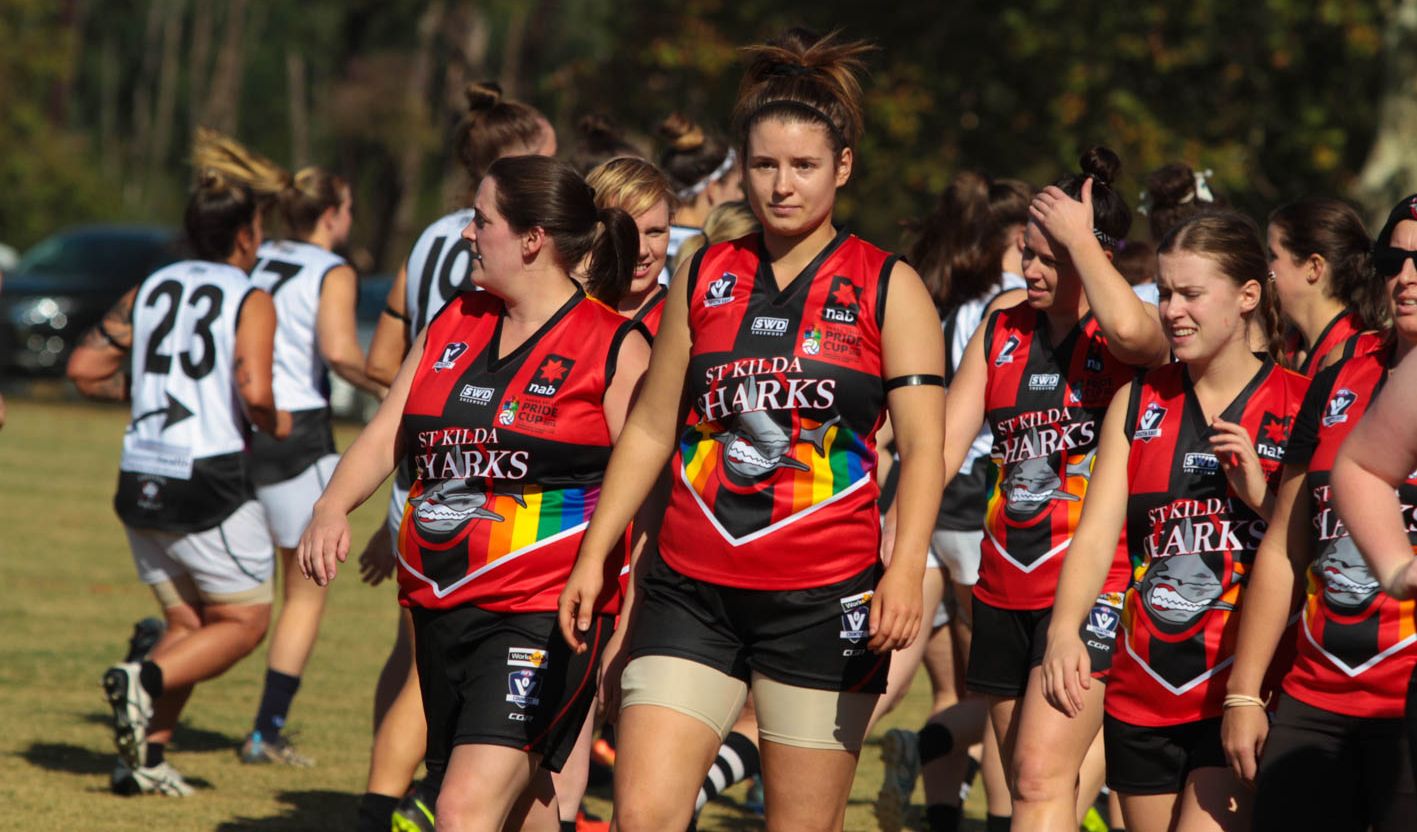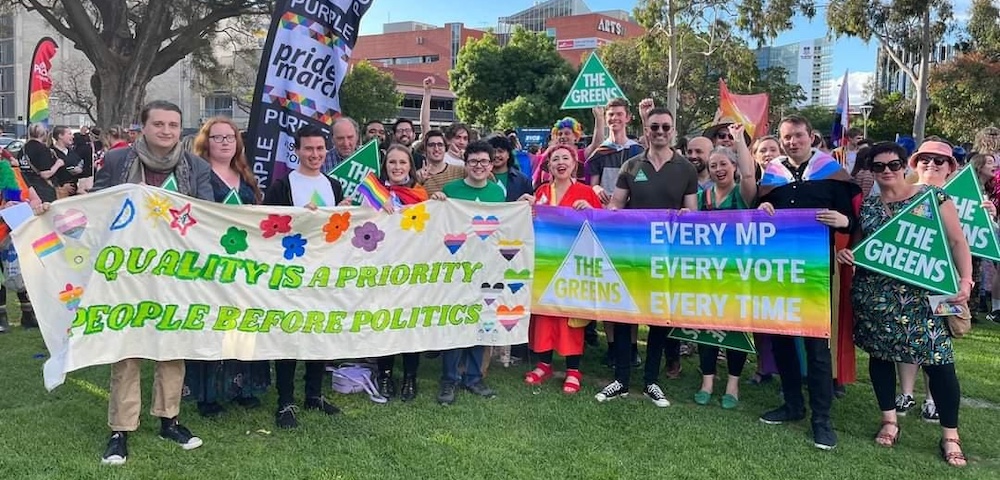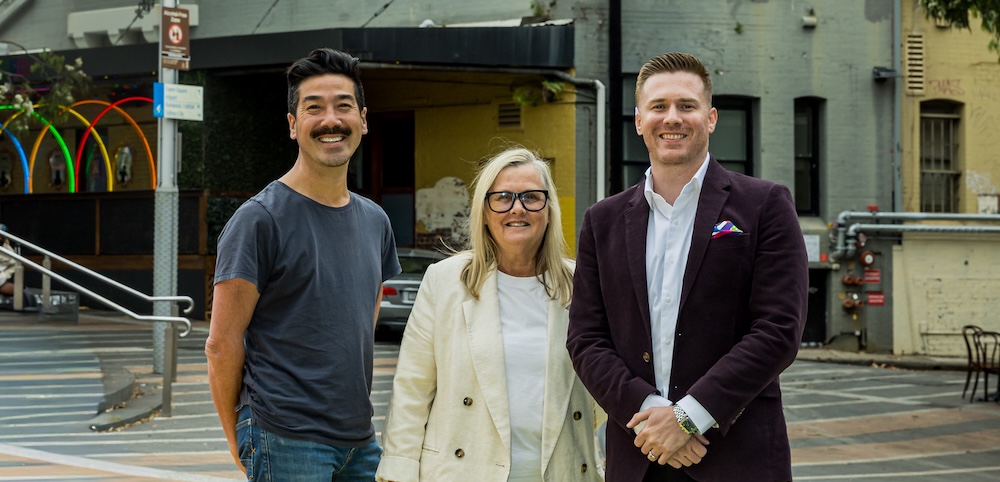
‘You live with micro aggressions daily’: trans footballer Emily Rowe

Football player and trans advocate Emily Rowe has spoken out against the “snide remarks” and “hate” faced by trans people in sport.
In a piece for The Guardian, Rowe recalled being told to “stop being so strong” by an opposition player during a recent football game.
“These were the last words I expected to hear from an opposition player, who, in my most recent game playing for the St Kilda Sharks, grabbed me by the collar and drew me aggressively towards her face,” she wrote.
“My coach had given me the role of being physical, turning every loose ball into a hard ball for our opponents, and I was playing my role well; apparently too well.
“It was clear to me that ‘stop being so strong’ was not about how I was playing football. It was about who I am. As a trans person you get used to the coded language and snide remarks. You live daily with the micro aggressions, the mockery, the hate.”
Rowe added that many in society still hold onto the fallacy that men are stronger than women, and that this notion feeds into gendered discrimination.
“‘Stop being so strong’ meant ‘stop being a man’,” she wrote.
“Stop expecting to be welcome in women’s spaces. Stop being who you are meant to be.”
Despite the vitriol and transphobia still faced by gender diverse athletes, there are many making great strides towards inclusivity and acceptance on the sports field.
Bowie Stover from LGBTI sports charity Proud 2 Play is one of the people advocating for better inclusion of sex and gender diverse people in sport.
And last month, a trio of trans and non-binary activists spoke to players and staff at the Essendon Bombers football club about the impact of visibility in sport.
In her opinion piece, Rowe said the transphobia that persists in community sport is fed by the AFL’s reluctance to fully embrace trans players, as evidenced by Hannah Mouncey’s struggles getting drafted into the women’s league.
“‘Stop being so strong’. The truth is, I’m stronger now than I ever have been,” she wrote.
“And I’m not going to let any opponent, not even the AFL, hold me back.”










My Thoughts as a trans athlete.
Finding the balance of sex, gender, human rights, fairness and the sciences in sports remains sports greatest challenge. Testosterone levels should not be the starting point in this conversation.
I am just one person these are my thoughts on where we are up to in this discussion. I strongly suggest we need round the table discussions with individual sports
and we need a multi skilled group of people to arrive at the best way to move forward in these discussions. We need to listen to the concerns of all stakeholders and err on the side of caution
Sports need to embrace and promote diversity, inclusion and accessibility in all things they do. Sport needs to also have a start point of everyone is able to play unless an unnatural advantage exists.
I would like as many sports as possible to become non gender specific and I suggest sports should separate their sports in a similar way in which the International Paralympics Committee separates their sports, on abilities not gender.Presently sports are predominantly segregated by biological sex and I see that remaining for most sports for the immediate future.
For both XY female and XX male transitioning and transitioned athletes there are many sports that could have no prerequisite to compete in the competition that matches the athletes gender identity particularly in sports that do not require strength and endurance.
I suggest some sports could have varying criteria to be met at each level of their sport in a similar way Australian Cycling has developed their transgender guidelines with self identification the only
requirement at the local level with more stringent criteria to be met up to the elite level of their sport.
Their is no doubt that being born with an XY male endocrine system, experiencing a male puberty and living many years with the normal range of male testosterone levels on average gives an XY person an advantage in endurance and
strength then an XX female. The clearest example of this advantage can be observed with every world sporting record that relates to strength and endurance is held by an XY male and the difference between XX female and XY male world records is about 10 to 12%.
As XY transitioning and transitioned female athletes if we can show we have minimised our advantage as an individual by 10 to 12% as a minimum during our transition I am confident we would gain far more acceptance in sport.
I strongly suggest that any sport that is currently following the IOC & WADA Guidelines immediately retract this policy as these guidelines were not based on science they were developed in half a day as a hip response to lesson liability in Kristen Worley’s HR case in the divisional court in Toronto Canada. The current guidelines force transitioning and transitioned XY females to maintain extremely unhealthy testosterone levels which results in XY females entering into a permanent state of severe post menopausal symptoms and complete androgen deprivation. Over 200 functions in my body everyday have been adversely affected by maintaining my endogenous testosterone level under 10 nmols.
The current IOC & WADA guidelines also permits XX transitioning males to super dope unrestricted with exogenous testosterone once again resulting in a very unhealthy athlete.
Clearer criteria needs to be developed firstly to enable both the trans athlete and their opponents to have a full understanding of how, when and how the criteria is met or not met and what the criteria is.
We have to stop having the athlete at the time of competition having to defend their participation like Laurel Hubbard recently endured. Secondly we need this criteria to be able to show that each XY female has minimised their advantage by 10 to 12%.
I suggest at the elite level of sports and in high impact sports like Rugby League and Australian Rules Football are treated on a case by case basis to ensure the advantage in women’s competition has been minimised.
How we do this I suggest is by having as previously stated clearer criteria to be met such as pre transition BMI, V02 Levels, muscle mass and bone density as well as testosterone levels etc.
Some athletes could meet this criteria very quickly others like myself may take years longer with many variables affecting the feminisation process such as the age at time of transition the
previous sports involvement etc. a blanket time frame I do not suggest could ever work as we all transition at such different rates.